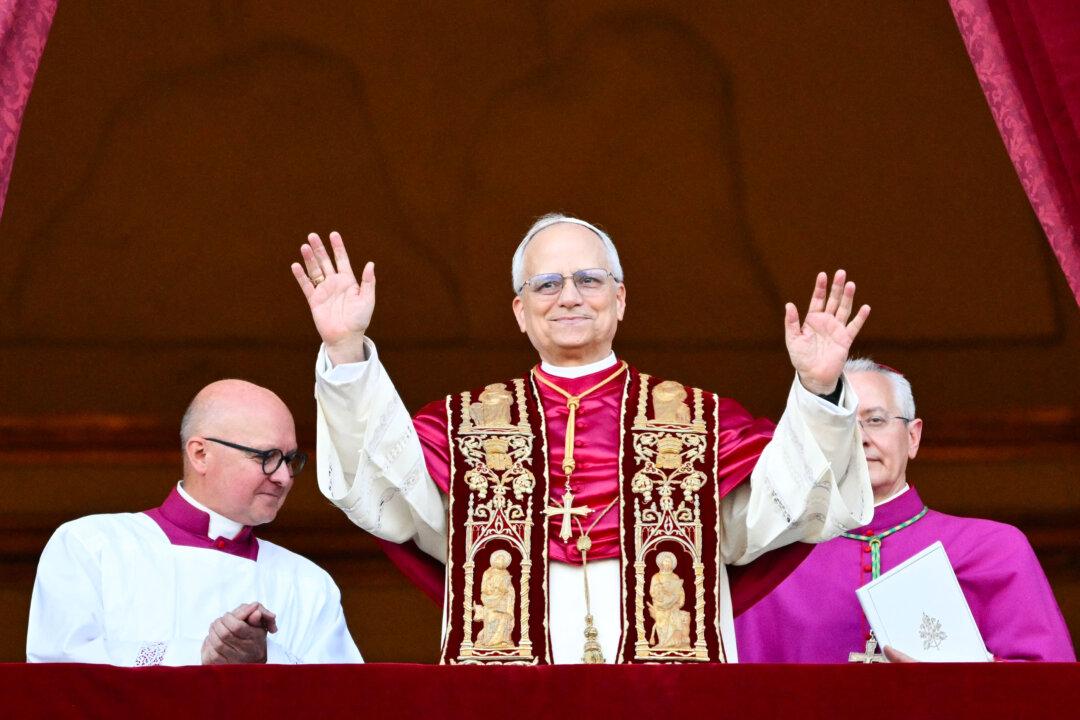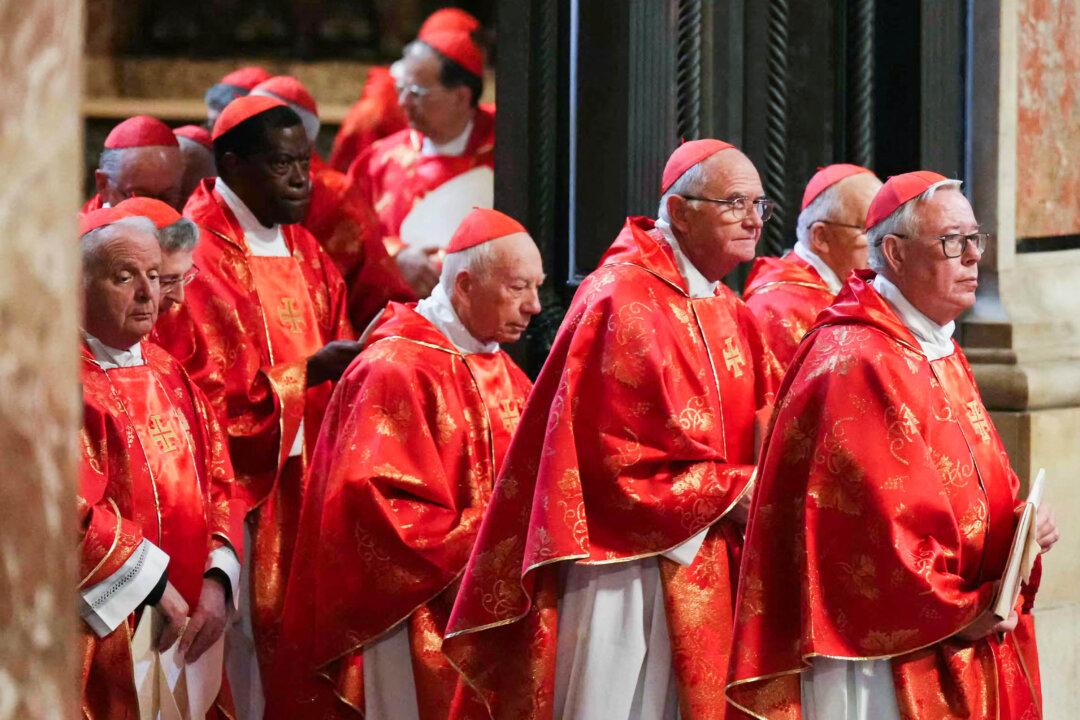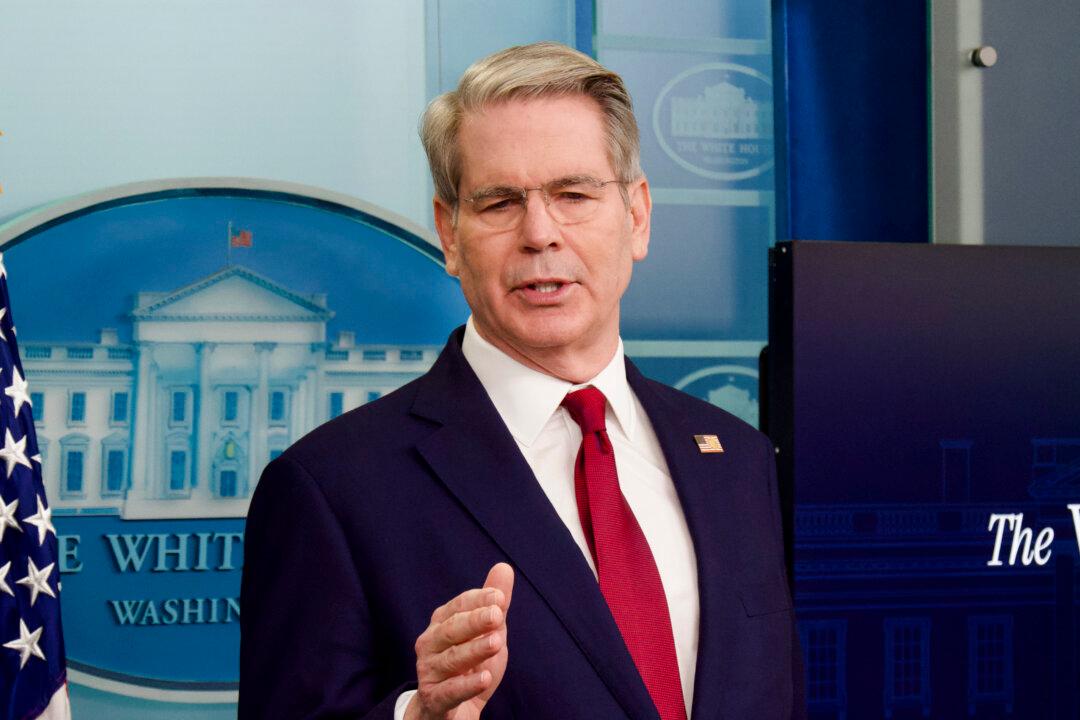A new pope has been elected and he is American.
The College of Cardinals have chosen Cardinal Robert Francis Prevost, on the evening of May 8 on the third overall vote of the conclave.
Prevost has chosen to take the name Pope Leo XIV.
With his first words as pontiff, he wished all people peace, and urged the church to go forward “without fear, hand in hand.”
The Church must build bridges of peace around the world, he said.
He also invoked the intercession of Our Lady of Pompeii, Patroness of the Rosary, and led the congregation in reciting the Hail Mary.
Pope Leo XIV spoke to the world in Latin, Italian, and Spanish, but chose not to speak his native English.
White smoke rose from the chimney of the Sistine Chapel and bells rang out from St. Peter’s Basilica Thursday evening. It signaled that the secret vote among the 133 cardinal electors—representing dozens of nations from all over the world—had reached the necessary two-thirds majority and that the chosen man had accepted the position.
This was the most populous conclave in history, and the cardinals reached their selection on the second day of conclave.
More than an hour later, cheers erupted from the hundreds of thousands of faithful packing the Vatican’s St. Peter’s Square who heard the proto deacon’s long-awaited Latin declaration, “Habemus Papam!” which means “We have a pope,” confirming to the world that the Roman Catholic Church has a new leader. The Church has been in a period of “sede vacante,” meaning “the seat is vacant,” since Pope Francis died on April 21.
Pope Leo XIV, 69, is a native of Chicago but spent a significant amount of his ministry in Latin America, coming to the conclave as the Archbishop-Bishop emeritus of Chiclayo, Peru. He was twice elected superior general of the Augustinian order.
He was appointed prefect of the Dicastery for Bishops and president of the Pontifical Commission for Latin America by the late Pope Francis on Jan. 30, 2023. He was elevated to the rank of cardinal in September of that year.
Between the two events, tens of thousands of faithful from all over the world filled St. Peter’s Square and the Via Della Conciliazione beyond the city’s borders, waving flags, singing “Salve Regina,” and chanting phrases such as “Viva el Papa”—”Long live the Pope.”
Behind the walls of the Vatican, a specific process was underway. The vote was confirmed, the new pope was formally offered the Throne of St. Peter, and then asked which saint’s name he wishes to take as his papal name.
The new pope’s acceptance of the election marked the immediate end of the conclave “unless he decides otherwise,” according to the Vatican.
It was at this point that any outsiders who needed to discuss immediate matters, such as the interim Secretary of State and Secretary for Relations with States may enter the Sistine Chapel.
The new pope was taken to a small room next to the Sistine Chapel, the “Room of Tears,” to don the white papal vestments for the first time. It is called the “Room of Tears” because the newly appointed pontiff often becomes overwhelmed with emotion.
He then returned to the Sistine Chapel to take his seat for a brief ceremony, in which the senior Cardinal priest read a passage from the Gospel.
The protodeacon offered a prayer for the newly elected pope and each of the cardinals inside took an oath of allegiance to the new supreme pontiff.
Pope Leo XIV
He follows Pope Leo XIII, who reigned from 1878–1903. A staunch opponent of moral relativism, Leo XIII is regarded as the father of Catholic social teaching.The original Leo, Pope St. Leo I, was a fifth-century pope who confronted Attila the Hun at the gates of Rome.
The naming tradition reflects Christ’s renaming of St. Peter, whose original name was Simon. It has been standard practice since the election of Pope John XII in 955. The custom has been adopted by 130 of the now 267 pontiffs, with some choosing the name they took when they joined their religious orders.
According to the Vatican, popes adopt a new name for several reasons. In the early church, many did it because their original name was of pagan origin. Others took the names of their immediate or recent predecessors as a sign of admiration and a desire to follow in their footsteps.
Pope St. John Paul II, for example, took the name of his immediate predecessor, Pope John Paul I, who chose to combine the names of his last two predecessors, Pope Paul VI and Pope John XXIII, to emphasize the continuity of their work, which included reforms instituted during Vatican II.
Pope Benedict XVI chose his name to draw a connection to Pope Benedict XV, who led the church through World War I, as well as St. Benedict of Nursia.
Meanwhile, Francis was the first pope in history to take Francis as his name. Although he was the first Jesuit pope, he did not take his name in homage to the early Jesuit missionary St. Francis Xavier, but rather St. Francis of Assisi, known as a man of peace and a champion of the poor.
Prominent saint names still unclaimed by any pope include Andrew, Joseph, James, and Luke. Out of respect, no pope has chosen the name Peter.





